Introduction:
The cotton plant produces a soft, staple fiber called cotton that grows inside a protective capsule called a boll. Its seeds are protected within the boll by cotton fiber. Essentially, it is a seed fiber. The cotton fiber is known as the king of textile fibers. A soft, breathable textile is made from this fiber by spinning into yarn, and it is the most commonly used textile for clothing. Cotton is classified according to its fineness, staple length, maturity, contamination level, and strength. It is easy for cotton to blend with other fibers, particularly polyester and viscose. A major application of cotton is in clothing as well as in home and furnishing textiles.
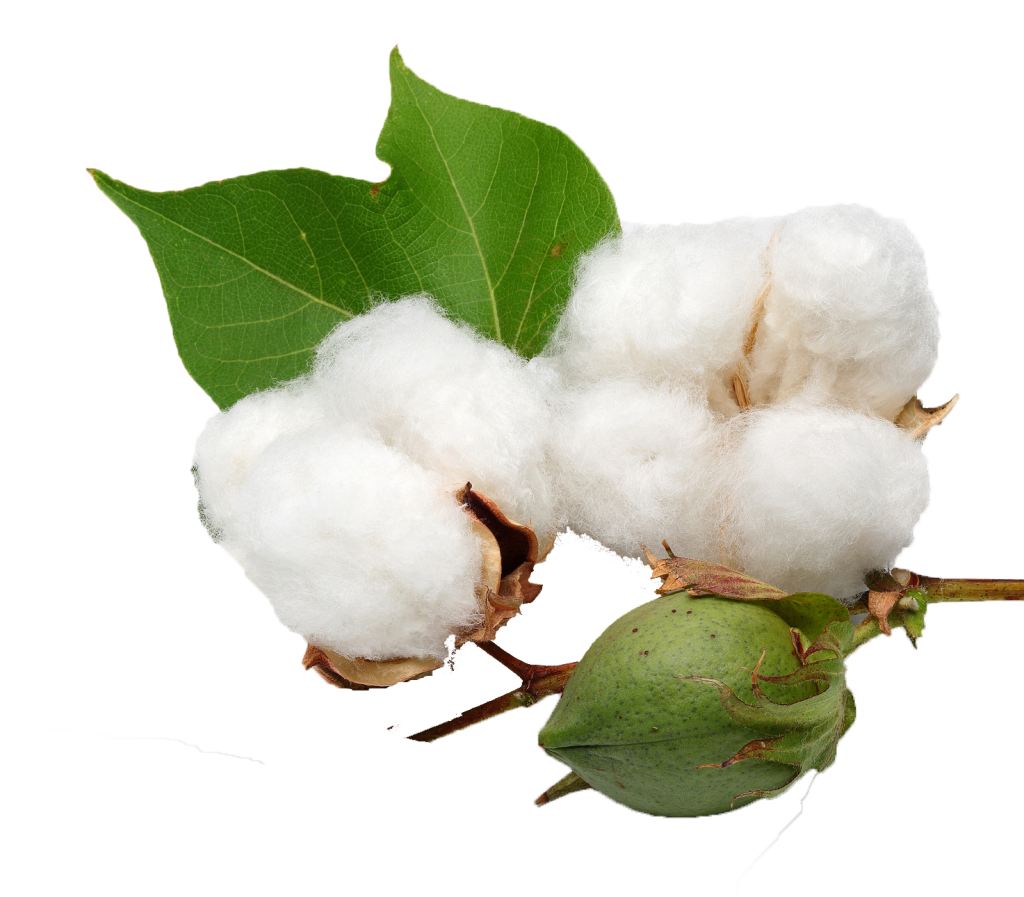
The majority of cotton fibers are not processed into technical textiles. In the manufacture of curtains, tents, and tarpaulins, cotton is commonly used. A wide variety of apparel is also made with it, including blouses, shirts, dresses, children’s wear, active wear, separates, swimwear, underwear, suits, jackets, skirts, pants, sweaters, hosiery, and neckwear. There are many home fashion articles made of cotton, including curtains, draperies, bedspreads, sheets, towels, table cloths, table mats, and napkins. There are many industrial applications for this fiber, including ropes, bags, shoes, conveyor belts, filter cloth, and medical supplies. As a result of its strength and absorbency, it makes an excellent choice for medical textiles like bandages and swabs. As it has low thermal conductivity, it is ideal for both summer and winter clothing. During the summer, it protects the skin from heat, and during the winter, it keeps the body warm.
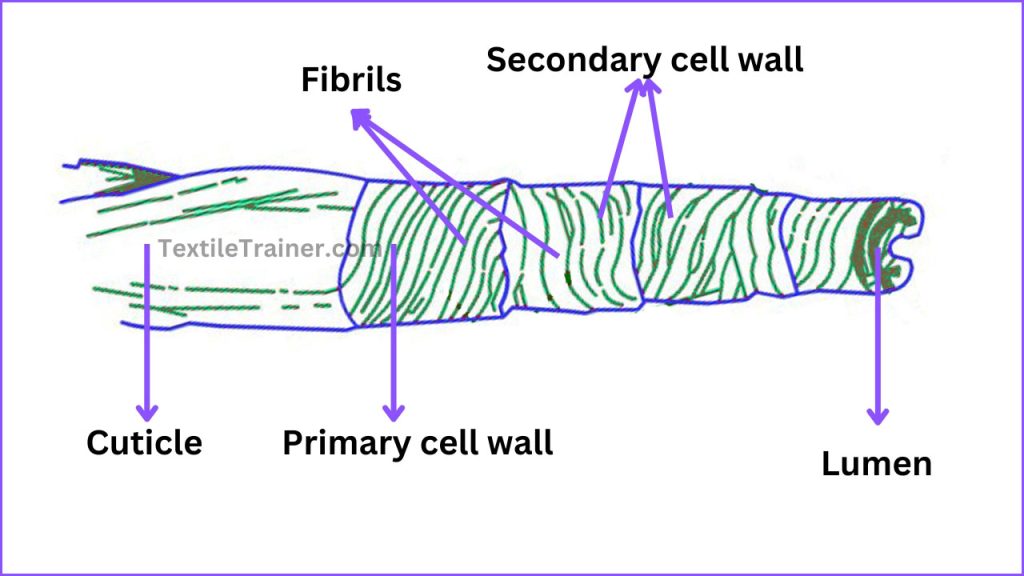
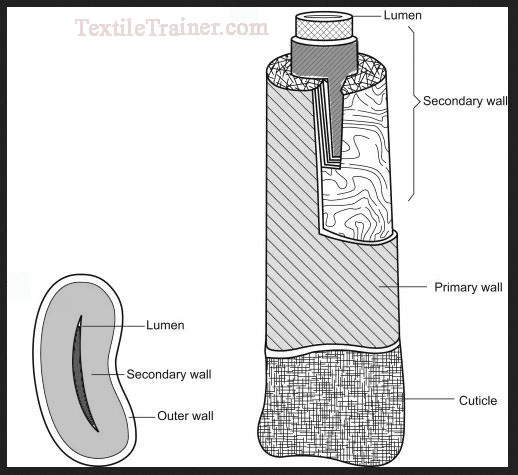
Morphological Diagram of Cotton:
Dry cotton fiber is a single plant cell, which is a flattened tube of collapsed cellulose. Each cotton fiber consists of a concentric layer of fresh cellulose extending from the outside to the inside. Cotton fiber is a single plant cell. Its cross section is oval, compared with the normal hexagonal plant cell. However, cotton morphology is described below:
- Cuticle.
- Primary cell.
- Secondary cell.
- Lumen.
Cuticle:
The outermost fiber wall is called the cuticle, and the cuticle layer is separable from the fiber itself and consists of wax and pectin materials. Because of its waxy nature, the cuticle adheres tenaciously to the fiber’s primary wall.
Primary cell:
Primary wall fibers are composed mainly of cellulose, which is arranged in a crisscross pattern inside the cuticle, called fibrils. The fibrils are about 20 nm thick and spiral about 700 degrees to the fiber axis. This spiral effect on the fiber’s outer wall makes it more resilient against lateral deformation. It is easy for water to penetrate through these fibrils and it is capable of forming bonds with a variety of chemicals, dyes, cross-linking agents, flame-retardants, and water-repellent agents.
Secondary cell:
The secondary wall contains the majority of cellulose within the fiber, which is found under primary wall. There are three sub layers in it. There is an outermost layer made up of comparatively thin fibrils oriented helical at a 20-35 degree angle. The spiral direction of the fibrils periodically reverses in this region.
Lumen:
A lumen wall separates the secondary wall from the lumen and appears to be more resistant to certain reagents than secondary wall layers. Lumen is hollow canals that run the length of fibers. During the growth period, it is filled with living protoplasm. When a fiber matures and the boll opens, the protoplasm dries up, and the lumen collapses, leaving a central void, or pore space.
Chemical composition
Cellulose is the main component of cotton but oil, wax, protein, pectin and some coloring content are also present as following percentage:
| Component | Percentage |
| Cellulose | 94% |
| Protein | 1.3% |
| Pectin | 1.2% |
| Ash | 1.2% |
| Wax | 0.6% |
| Total sugar | 0.3% |
| Pigment | Little amount |
| Others | 1.4% |
| Total | 100% |
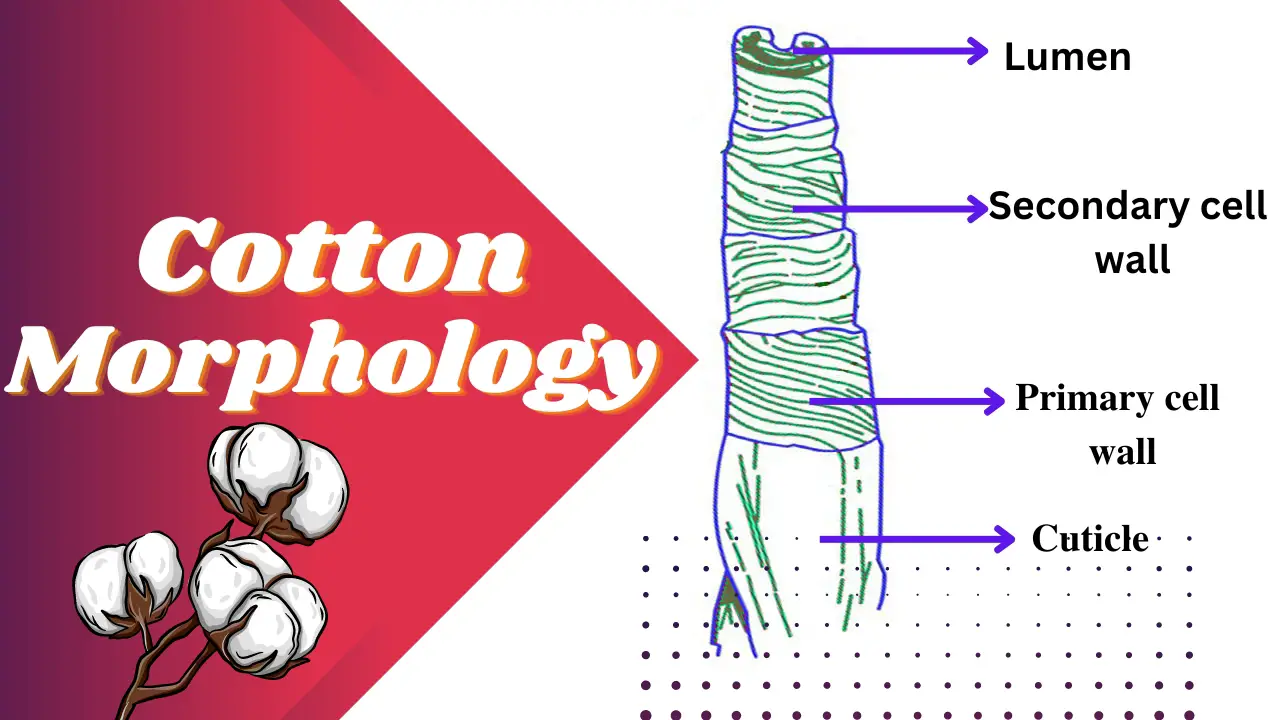
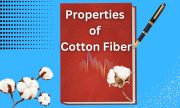

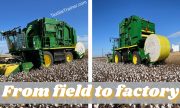

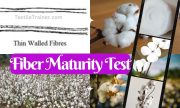
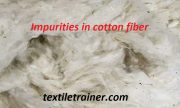
helpful article…thanks keep it up
Thank too…..
I really liked your article.Much thanks again. Really Great.
Thanks a lot.
I appreciate you sharing this article. Great.
keep visit our site…..
Really informative post.Much thanks again. Great.
thanks too….please support us….
Great blog.Thanks Again. Much obliged.
Keep visit our site..
Really informative post. Fantastic.
thanks too
Appreciate you sharing, great blog.Much thanks again. Really Great.
please support us.
Appreciate you sharing, great post.Really thank you!
I really like and appreciate your blog.Really thank you! Really Great.
Very informative blog article.Thanks Again. Great.
Thanks for the post.Thanks Again. Much obliged.
Im obliged for the post.Really looking forward to read more. Want more.
ok…
I really like and appreciate your article.Thanks Again. Will read on…
Thanks too……
Thank you ever so for you post.Thanks Again. Really Great.
I am so grateful for your article.Really looking forward to read more. Fantastic.
This is one awesome post. Awesome.
Major thanks for the blog post.Much thanks again. Great.
Thank you ever so for you blog.Thanks Again. Cool.
I loved your blog article.Really looking forward to read more. Awesome.
Major thanks for the blog post.Really thank you! Awesome.
Hey, thanks for the blog.Thanks Again. Fantastic.
Im grateful for the post.Thanks Again. Fantastic.
Enjoyed every bit of your article.Really looking forward to read more. Will read on…
Thank you ever so for you blog article.Really thank you! Will read on…
Very neat blog post.Much thanks again. Really Great.
Thanks again for the blog post.
I value the blog.Much thanks again. Great.
Thanks a lot for the article post.Really thank you! Keep writing.
I really like and appreciate your blog article.Really looking forward to read more. Awesome.
Great, thanks for sharing this article post.Really thank you! Keep writing.
Appreciate you sharing, great post.Really thank you! Great.
A big thank you for your blog.Really looking forward to read more. Great.
Thank you ever so for you blog post.Really looking forward to read more.
Major thanks for the article.
I value the blog.Thanks Again. Much obliged.
Thank you for your blog post.Thanks Again. Want more.
Thanks a lot for the blog post.Really looking forward to read more. Fantastic.
Thank you for your blog.Really thank you! Awesome.
Major thankies for the blog post.Thanks Again.
Enjoyed every bit of your blog.Thanks Again. Much obliged.
Fantastic blog.Really looking forward to read more.
Say, you got a nice blog. Really Cool.
I cannot thank you enough for the article post.Really looking forward to read more. Fantastic.
I really enjoy the article.Really looking forward to read more. Really Great.
Really appreciate you sharing this article. Awesome.
Im grateful for the blog post.Much thanks again. Fantastic.
I appreciate you sharing this blog post.Thanks Again. Will read on…
I cannot thank you enough for the article. Cool.
I think this is a real great article.Really looking forward to read more. Will read on…
Major thankies for the article post.
Thanks for the blog. Really Cool.
Im thankful for the article.
A big thank you for your article post.Much thanks again. Really Great.
I cannot thank you enough for the article.Much thanks again. Really Cool.
Really enjoyed this post. Great.
Enjoyed every bit of your post. Will read on…
I really like and appreciate your blog post. Want more.
Thanks so much for the blog post.Thanks Again. Really Great.
Say, you got a nice article. Fantastic.
Awesome blog post.Really looking forward to read more. Really Great.
Thanks
Say, you got a nice blog post.Really looking forward to read more. Will read on…
Thanks for the blog article.Thanks Again. Really Great.
I am so grateful for your article post.Much thanks again. Great.
Thanks again for the article.Really looking forward to read more. Cool.
Stay connected
Say, you got a nice blog article.Really thank you! Want more.
Very informative article post.Really looking forward to read more. Much obliged.
I really liked your blog.Really thank you! Much obliged.
Enjoyed every bit of your blog.Really thank you! Will read on…
I really like and appreciate your blog.Really looking forward to read more. Really Great.
I really liked your article post.Thanks Again. Much obliged.
Thanks a lot for the blog article.Really looking forward to read more. Great.
Enjoyed every bit of your article post. Cool.
I appreciate you sharing this article. Great.
Very informative blog article.Much thanks again. Cool.
I am so grateful for your article post. Awesome.
Thank you ever so for you article.Really thank you! Will read on…
wow, awesome blog post.Thanks Again. Great.
Really enjoyed this blog article.Thanks Again. Really Cool.
Awesome article.Really thank you!
Very good blog.Really thank you! Awesome.
Great post.Thanks Again.
Say, you got a nice blog. Will read on…
Enjoyed every bit of your blog post.Thanks Again. Will read on…
Very informative blog.Really thank you! Want more.
Really appreciate you sharing this blog article.Thanks Again. Fantastic.
I really liked your blog post.Really looking forward to read more. Will read on…
Im grateful for the blog.Really looking forward to read more. Really Great.
Very good article post.Really thank you!
Thank you for your blog. Great.
Great blog.Really looking forward to read more. Cool.
Great article.Thanks Again.